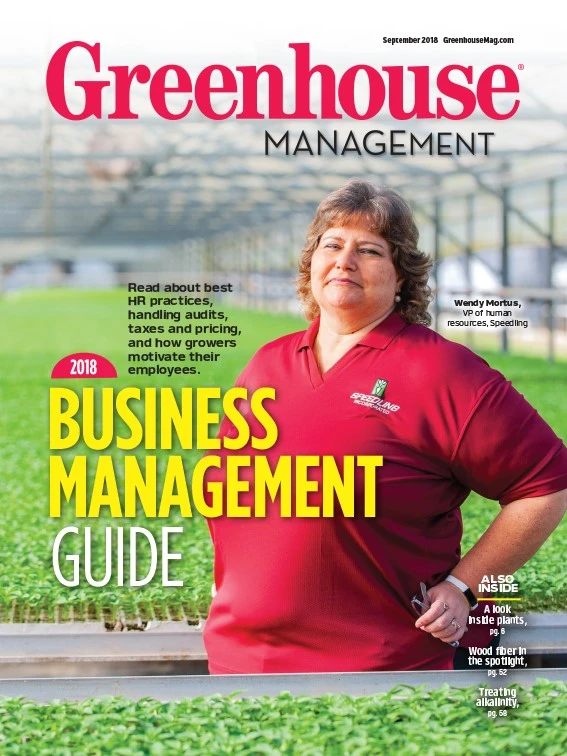
As president of the Perennial Plant Association (PPA) and a horticulturist at the Smithsonian, Janet Draper’s life is plants. Even after working hard to help oversee the 2018 Perennial Plant Symposium in Raleigh, North Carolina, this summer, Draper won’t take a break from plants. For her, plants, and the people that share her passion for them, are everything.
Below, Draper answers questions about her job at the Smithsonian, her favorite perennials and balancing plants as a career and a passion.
Greenhouse Management: At the Smithsonian, you’ve been overseeing the Mary Livingston Ripley Garden for the last 20 years. What is it like managing the same space for two decades? How has it changed?
Janet Draper: I know it very intimately, working there so long. There are mature American Elm trees in the space, which over time have gotten bigger and their roots [have gotten] more prevalent. And just having to adjust what I grow due to the changes of the space. And styles have changed too. I don’t really consider myself [as a trend follower], but I guess I do because I was into that tropical, canna banana, all-crazy tropicals, which do wonderfully in the D.C. heat and humidity. They just flourish. But I think I’m becoming more of an ecological gardener and trying to teach people those kinds of thoughts that plants can be much more than just something pretty out there. And that [plants] can give back so much more.
GM: Do you have a favorite perennial, or a few favorite perennials?
JD: You’re asking to pick my favorite child, which is really tough. But I will anyway. One of them is the Perennial Plant of the Year this year, Allium ‘Millenium.’ I love Allium ‘Millenium’ because it looks great for such a long season of time. Talk about a pollinator magnet. The amount of insects it draws in and provides nectar for is wonderful. And then I also love Calamintha ‘White Cloud.’ It's just another top-notch pollinator plant that I love personally for the wonderful fragrance of the foliage [and] the frothy, baby's breath-like vision it produces. And as a third benefit, the amount of pollinators it brings in and the life that it brings to the garden. Phlox paniculata ‘Jeana’ is another favorite.
GM: You also cultivate a home garden in addition to maintaining the garden at the Smithsonian. How do you continue to fuel your passion for plants as a hobby when it's also your career?
JD: That’s where I am really fortunate because you don’t turn off passion — it’s either there or it’s not. The garden that I do for Smithsonian, I am on public display at all times. It is not big, only a third of an acre, but it is jam-packed with as many plants as I can possibly cram in there. And I am constantly asked public questions and inquiries — everything from ‘How do I find the Air and Space Museum?’ to ‘Where is the closest bathroom?’ But when I’m in my home garden, it’s [only] me and occasionally a neighbor will stop by and make a comment, or we’ll chat, but I’m not on public display at home. There’s a big difference between the two. What I love about my garden is that every day is a new adventure and a new change. It being more naturalistic, there seems to be something different daily. It’s constantly evolving and that's the overall joy that horticulture brings for me.

Explore the September 2018 Issue
Check out more from this issue and find your next story to read.
Latest from Greenhouse Management
- 2025 Proven Winners Horticulture Scholarship applications now open
- How to improve inventory and shipping management in the greenhouse
- Leading Women of Horticulture: Anna Ball, Ball Hort, and Terri McEnaney, Bailey Nurseries
- GM CEA HERB Part 2: A guide to increasing the sowing density of culinary herbs
- GM CEA HERB Part 1: Best practices for producing culinary herbs in controlled environments
- USDA fires experts on invasive pests, including Asian citrus psyllid, chilli thrips
- CEA Alliance celebrates bipartisan introduction of Supporting Innovation in Agriculture Act
- Dümmen Orange North America celebrating 25th anniversary in 2025





